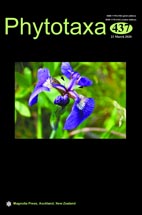Abstract
The genus Monstera is represented in Mexico by nine species, of which five are reported for the region of Los Tuxtlas, Veracruz. During fieldwork between 2014 and 2019 in Los Tuxtlas, we discovered a previously undescribed species belonging to Sect. Marcgraviopsis and consisting of a third species from Mexico with a pendent habit. The new species Monstera guzmanjacobiae, is described taxonomically and illustrated, using color photographs of vegetative and reproductive features in living material. The behavior of flowering coincides with that observed in other species of Monstera. Both nitidulid beetles and drosophilid flies found inside the chamber may be the pollinators of M. guzmanjacobiae.

